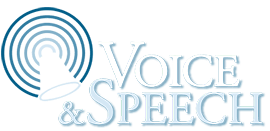Transcript
Proper breathing gets a lot of attention when we talk about public speaking and presentation, and you’ve probably heard advice such as breathe in the right place, breathe where it makes sense, breathe at the punctuation. These little gems of grade school wisdom are actually huge traps for anyone trying to learn proper breathing as a speaker. Your voice is a wind instrument. It requires generous amounts of breath to work well. If there’s inadequate breath in the system, everything suffers and I mean everything. If there’s no breath to flow sound out of your body, your only choice is to start squeezing sound from your body. That doesn’t feel good, it doesn’t sound good, and it has no impact on your listeners. Proper breathing means so much more than breathing in the right place. The only right place to breathe is when you need to breathe. I don’t care if you’re at the end of a sentence, in the middle of a sentence, or even in the middle of a phrase, the instant you feel that I=need-a-breath feeling, you pause, allow a new breath into your body, and then resume speaking.
Your need to breathe always takes precedence over the requirements of the punctuation. That’s the difficult thing for beginner, letting go of those ingrained rules about proper breathing long enough to learn and master the universal principles governing voice and speech. Robert McKee, a well-known screenwriting teacher wrote this, “A rule says you must do it this way. A principle says this works and has for all remembered time. The difference is crucial. Anxious, inexperienced writers obey rules. Rebellious, unschooled writers break rules. Artists master the form.” That’s not true for just writing. It’s true for speaking and breathing too. When you’re too busy obeying the rules and doing it right, you can’t give yourself room to experiment and learn something truly new. I’ve seen professional speakers fail because they couldn’t distance themselves from their own performance long enough to develop a new skill. If you give yourself time and space to master the technique (connecting deep breath to sound), the performance (speaking and phrasing) will emerge naturally, effortlessly, and correctly. So, long before you worry about proper breathing in the right place, you should learn to breathe deeply, release breath easily, experience sound as vibrating breath, release sound easily and generously, feel the sound vibrations in words and phrases, honor the rhythm of speaking and pausing to inhale. When those skills feel natural, then you can explore the connection between speaking, breathing, and the demands of the text, but you’ll approach it with radically different priorities and you’ll discover there’s a lot more flexibility to proper breathing than most people realize.
Back away from the need to breathe in the right place. Practice is not performing. Spend time experimenting and cultivating crucial breathing skills. When you command your own breath, you control your own process. You perform the task of public speaking and presenting with a sense of confidence and ease because you’re in charge. That’s proper breathing. To learn more about proper breathing and how it can radically change your speech, click the link below and download the free report and video series, The Sound of Success.
Proper Breathing: There’s No “Right” Place to Breathe
Proper breathing means so much more than “breathing in the right place.” Learning how to breathe is so much more important that following simplistic rules about when to breathe. Proper breathing is really about learning and mastering crucial breathing skills that can be applied with great flexibility and ease, whenever you speak. It puts you in charge of your own performance.


